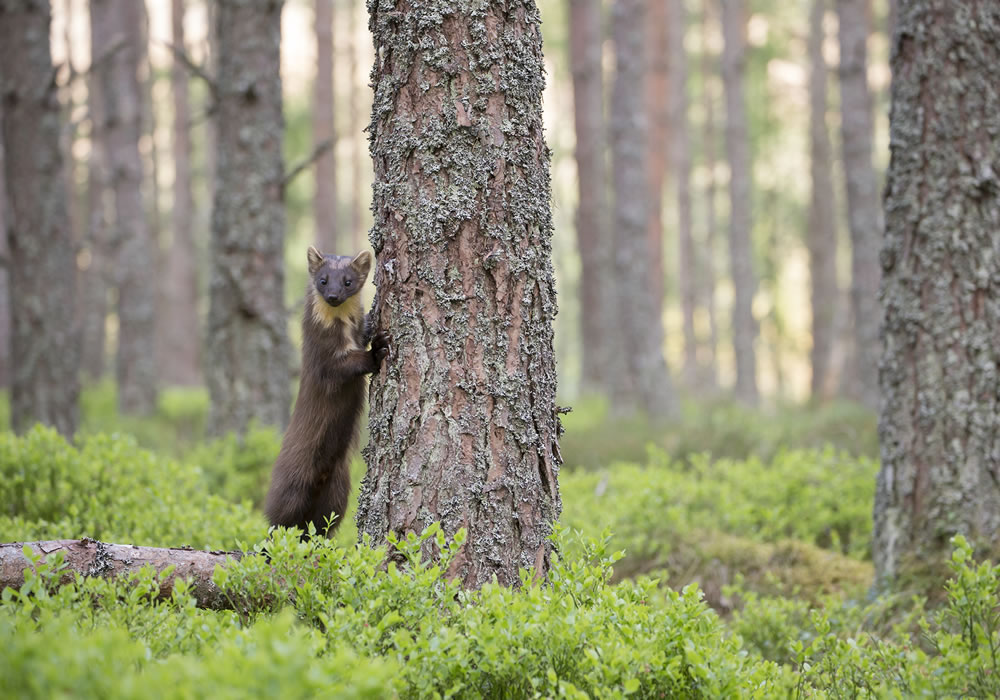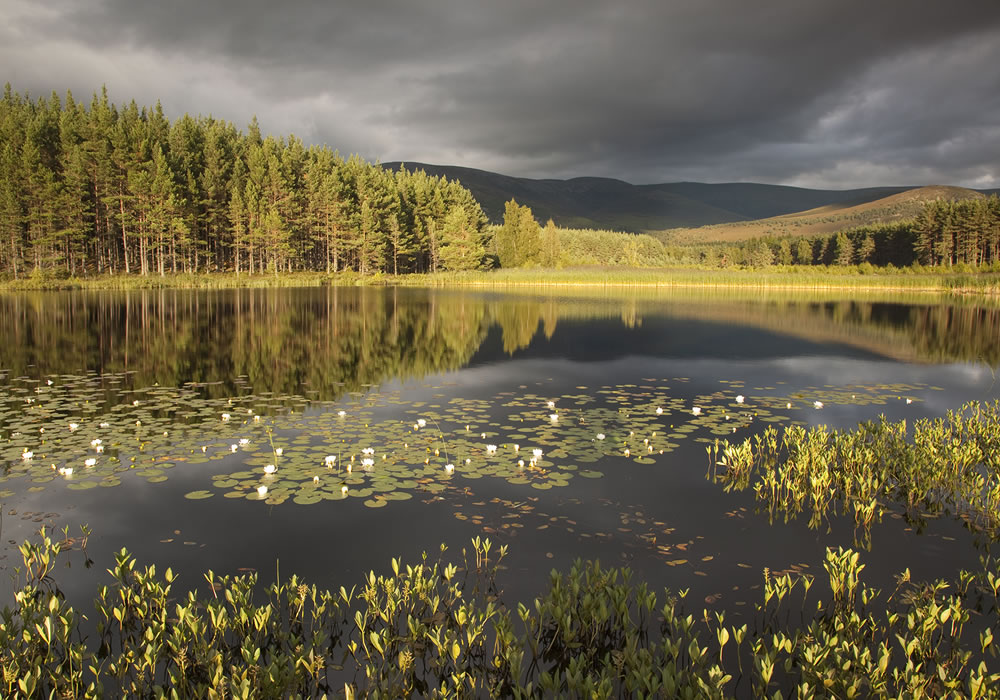

We don’t just talk about restoring habitats – we get it done. That is our driving motivation. Cairngorms Connect is the biggest habitat restoration project in Britain, encompassing 600 square kilometres (230 square miles) of contiguous land – dedicated to wildlife.
From the floodplain of the River Spey, through huge and ancient forests, to some of the highest mountains in Britain, the land the Partnership manages sits shoulder-to-shoulder. This means we can work for nature across a vast area. We are fortunate to be managing places that are already spectacular and important, and there are many opportunities to do so much more.
We get to know the sensitive species and habitats so we can safeguard and enhance them. We work together to control deer numbers to allow forests to expand; to naturalise rivers; to restore huge tracts of peatland and woodland. We monitor the outcomes of management, so we – and others – can learn from our work. We share the wonder and magic of this spectacular part of Scotland with people – whether they live here, visit, or follow us on social media.
Working together means bigger projects. Combining our resources makes the money go further!

Nature doesn’t recognise fences or lines drawn on a map. The strength of our partnership is in creating a seamless landscape for nature, resilient to the effects of climate change.

This is an amazing place for nature! Over 5,000 species have been recorded here; around 20% are Nationally Rare or Scarce; some are recorded nowhere else in Britain. Our restoration works aims to improve their habitats and build populations.

We are committed to restoring healthy habitats that are resilient to, and protect us from, a changing climate. In the longer term, natural processes will take hold and dictate how this landscape evolves.

The Partnership is made up of dedicated people – from scientists to deer stalkers; from countryside rangers to foresters. To realise our vision, we will need active involvement from those who live and work here, and those who visit this spectacular place. We want to inspire fresh thinking about how a healthier landscape can build economically vibrant local communities.

Wild landscapes soothe our soul and allow our imaginations to soar. A secure future for the Cairngorms Connect area needs people to value and care for its wild places and wildlife. This is an inspiring place for people of all ages, both local and those who visit from afar. This is a place for people to learn and develop their careers; to be creative, have fun, get active, or to find a place of tranquility.

Cairngorms Connect is pushing the boundaries of landscape restoration, working at much larger scales, with much greater emphasis on natural processes, than is typical in the UK. Through close partnership working, we use science to inform, monitor and improve our restoration work.